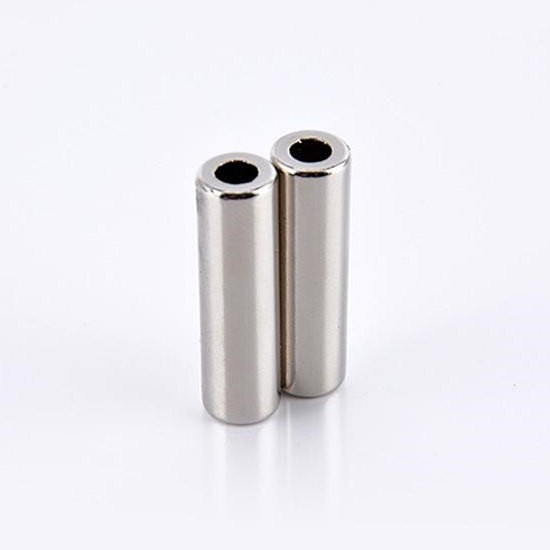How does the surface roughness of a cylindrical magnet affect its magnetic adhesion?
 Oct 07, 2025|
Oct 07, 2025| Hey there! I'm a supplier of Magnet Cylindrical products, and today I want to dig into a super interesting topic: how the surface roughness of a cylindrical magnet affects its magnetic adhesion.


Let's start by getting a basic understanding of cylindrical magnets. These bad boys come in all shapes and sizes, from Hollow Cylinder Magnets to Small Cylindrical Magnets and Cylindrical Permanent Magnet. They're used in a whole bunch of applications, like motors, sensors, and even in some fancy jewelry.
So, what exactly is surface roughness? Well, it's basically how bumpy or smooth the surface of the magnet is. You can think of it as the difference between a freshly paved road and a dirt track. A smooth surface is like that paved road, nice and even, while a rough surface is more like the dirt track, full of little bumps and dips.
Now, why does surface roughness matter when it comes to magnetic adhesion? To answer that, we first need to understand how magnetic adhesion works. When a magnet comes into contact with a ferromagnetic material (like iron or steel), the magnetic field of the magnet creates an attractive force between the two. This force is what we call magnetic adhesion.
The surface roughness of the magnet can have a big impact on this adhesion. When the surface of the magnet is smooth, it can make better contact with the ferromagnetic material. It's like when you're trying to stick two pieces of paper together. If the surfaces are smooth, they'll stick better than if they're all wrinkled and bumpy.
On a smooth magnet surface, the magnetic field lines can interact more effectively with the ferromagnetic material. There are fewer gaps between the magnet and the material, which means more of the magnetic force can be transferred. This results in stronger magnetic adhesion.
On the other hand, a rough surface can disrupt the magnetic field lines. The bumps and dips on the surface create gaps between the magnet and the ferromagnetic material. These gaps act as barriers, reducing the amount of magnetic force that can be transferred. As a result, the magnetic adhesion is weaker.
Let's look at an example. Imagine you have two cylindrical magnets of the same size and strength, but one has a smooth surface and the other has a rough surface. You try to stick them to a steel plate. The smooth magnet will stick much more firmly to the plate than the rough one. You might even notice that the rough magnet can be easily pulled off, while the smooth one takes more effort.
But it's not always that simple. In some cases, a little bit of surface roughness can actually be beneficial. For example, in applications where the magnet needs to be able to grip onto a material with a textured surface. A slightly rough magnet surface can conform better to the texture of the material, increasing the contact area and potentially improving the adhesion.
However, if the surface roughness is too extreme, it can still cause problems. Excessive roughness can lead to uneven stress distribution when the magnet is in contact with the ferromagnetic material. This can cause the magnet to wear out more quickly or even break under certain conditions.
Now, as a Magnet Cylindrical supplier, we understand the importance of getting the surface roughness just right. We use advanced manufacturing techniques to control the surface finish of our magnets. We can produce magnets with a wide range of surface roughness levels, depending on the specific needs of our customers.
If you're looking for magnets for an application where strong magnetic adhesion is crucial, like in a high - performance motor, we'd recommend going for magnets with a smooth surface. On the other hand, if you need magnets for an application where the material has a textured surface, we can provide magnets with a slightly rough finish to ensure a good grip.
We also offer customization services. If you have a specific surface roughness requirement for your magnets, just let us know. Our team of experts will work with you to make sure you get the perfect magnets for your project.
In conclusion, the surface roughness of a cylindrical magnet plays a significant role in its magnetic adhesion. Whether you need a smooth surface for maximum adhesion or a slightly rough surface for better grip on textured materials, we've got you covered. If you're interested in our Magnet Cylindrical products or have any questions about surface roughness and magnetic adhesion, feel free to reach out to us. We're always happy to have a chat and help you find the best solutions for your needs.
References
- "Magnetism and Magnetic Materials" by David Jiles
- "Engineering Magnetics" by R. L. Stoll

